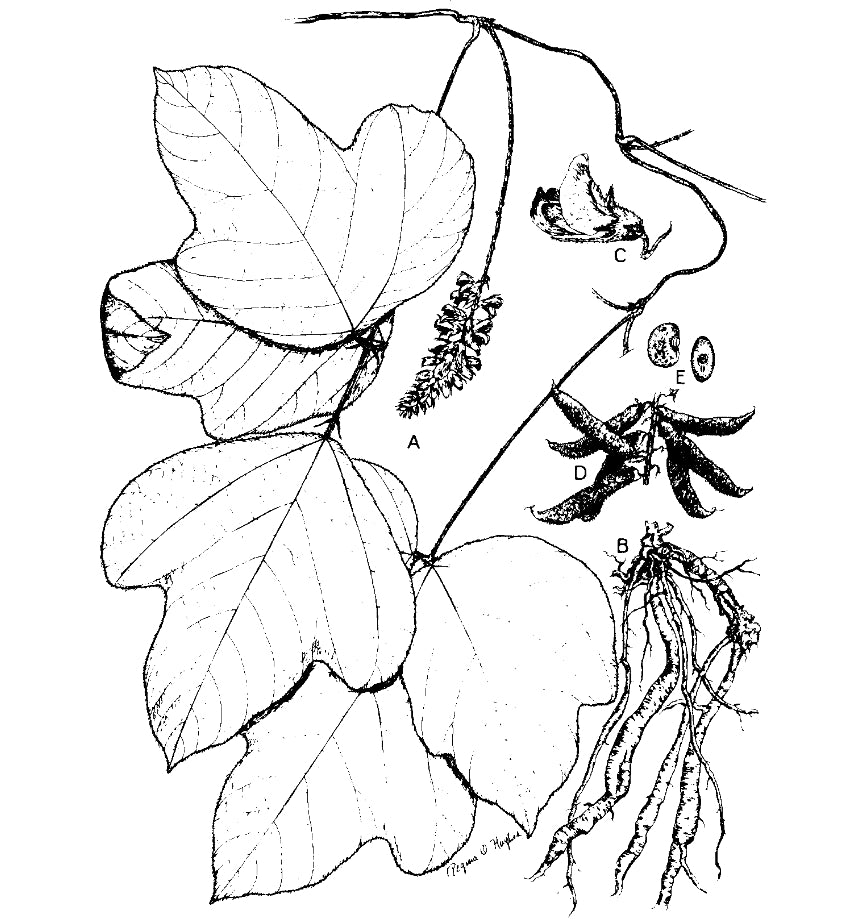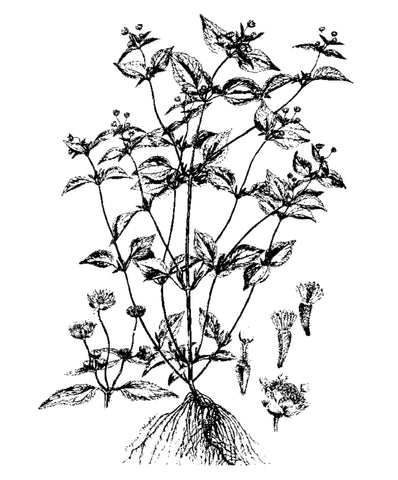Welcome to Book of the Week – a weekly feature of an Acres U.S.A. published title offering you a glimpse between the pages! Get the Book of the Week email newsletter delivered directly to your in box!
This week’s Book of the Week feature is Weeds – Control Without Poisons, by Charles Walters.
Add Weeds – Control Without Poisons to my shopping cart.
From Chapter 9: Poverty Pastures, Poverty Weeds
Two of the most virulent weeds in the Southeast, are kudzu and water hyacinth. The former curtails erosion by growing rampantly on our acid-clay soils. In time it leaves them rich and mellow. The latter filters the waterways along the coast, cleaning the waters while it obstructs boat traffic. Both put a lot of biomass into the ecosystem. We need good sources of biomass in the Southeast since our soils tend to degrade rapidly. Such biological potential should be appreciated. These weeds could be put to use instead of warred against.
This points up the fact that weed elimination does not equal weed control. Let us examine what control means. Take a car. To control it we must be able to start, guide and stop it. If any one of these three is beyond our ability, we do not control the car. The same with weeds. We need to know how to get a weed started in an area, change the way it grows and make it cease growing there — all three, before we can say that we control it.

Getting a weed started in a field may require planting it under favorable conditions. But, what are favorable conditions? Commonly, what is ideal for one plant is inimical to another. I once had problems with spiny amaranth, Jimson weed and smartweed because I was fertilizing with raw manure. Certainly these weeds love raw manure.
When I changed over to composting manures, the weeds that predominated were lambsquarters, redroot pigweed and galinsoga, for these weeds preferred compost. Before I restocked my soil pantry with granite dust from the local gravel quarry and raised my pH close to 7, I used to have broom sedge, a poverty weed that requires an acid and degenerating soil. Now I have fescue and red clover, which require more neutral conditions. Many of the worst weed problems occur where the soils are not suitable for the crops being grown there, but are instead favorable for weeds. Some knowledge of weeds and the conditions they prefer provides a seven-league stride toward controlling them.
Almost all farmers have weed tales to tell. One may get rid of his thistles by spraying blackstrap molasses. Another may phase out his coastal bermuda by alternating between winter rye and summer soybeans. Another may move his weeds from field to field by taking their seeds up in fodder crops and spreading them again in recycled manure, thus ensuring a healthy diversity in the field. The list might as well be endless. Each weed is different, reflects a different aspect of the heavens, relies on different soil conditions, has a different function and purpose. Patience, observation and experiment will yield all manner of insights.

For control of weeds, biodynamic agriculture looks to the manipulation of all the forces at work. If a certain weed is beneficial in the rotation, the farm may be managed in such a way as to bring the seeds of that weed to each field at the right time. Fertilization, cultivation and rotation may all be used to start, change and stop the weed. One wants just the right amount of chamomile in wheat, chicory in corn, or wild geranium in the hay. Achieving these optimum results, especially since nature is ever changing, is a challenge to even the most organized, perceptive and creative biodynamic farmers.
Some weeds are very difficult to control, even by the biodynamic expert. They may be easy to get started, yet nearly impossible to keep in check or eliminate. Their seeds are numerous. They overwhelm crops, contaminate harvests and ruin use of the land. And the extremes of clean cultivation may be nearly as bad as the use of herbicides. In lecture six of Agriculture, Rudolf Steiner — who gave biodynamic agriculture its start — outlines a remedy is what biodynamic growers call “making a weed pepper.’’

The year a weed grows too prolifically it might as well be accepted. But, seed from it should be gathered. If the weed is not propagated by seeds, those parts of the plant that reproduce it should be gathered. These should be burned to ash, preferably in a wood fire, and the ash saved. If there is enough ash it may be ground to uniform fineness with a mortar and pestle and homeopathically diluted and potentized for spraying so that a very strong effect is obtained from only a small amount of material. This homeopathic potency process may be done as follows.
Using a one-ounce bottle, place one-tenth of an ounce of ash in it and add nine-tenths ounces of rainwater (or other pure water). Succuss the contents by rhythmical, intensive shaking for a set period of time, such as three minutes. This is the 1X or D1, potency, depending on which school of nomenclature is followed. One-tenth of this ounce of D1 weed pepper is then added to another one-ounce bottle and nine-tenths ounces of water is added. This bottle is succussed to produce the D2 potency. This process is repeated for the third, fourth, fifth potentcies, ad infinitum, for as far as is desired. I usually go no farther than the tenth potency. Usually the eighth potency is the most effective for my uses. Since some potencies may eliminate the weed whereas others may actually stimulate the weed to grow and proliferate, choosing the right potency is important.
Two concepts figure in how I choose a potency. First, I “pendulum dowse’’ down the list of potencies, asking for the potency most effective in eliminating the weed. For me a strong clockwise swing is the right indication. Then I check on this with a specimen of the weed in my radionic scanner. I measure the general vitality of the weed (its 9-49) and then measure what each potency does to this general vitality reading. The potency that shows the greatest reduction in the general vitality is the one I use. Presumably, if I did not get a large enough reduction in the weed’s vitality with any of the first ten potencies, I might have to go to higher potencies.

To make enough spray to cover an acre or less, I go back to an earlier potency. For instance, I can take a tenth of an ounce of my D5 to nine-tenths water and make a full ounce of D6. After succussing it, I can take this ounce of D6 and add it to nine ounces of water in a quart jar. After succussion I can add this ten ounces of D7 to ninety ounces of water in a gallon jug and succuss for one-hundred ounces of D8 weed pepper. This is at the limit of what can conveniently be potentized by succussion. Usually this is all I need for the areas I deal with in my market garden, and I can apply it with my gallon-sized pump sprayer.
Each person has his or her own way of doing things. One farmer may add a touch of hydrogen peroxide to the water. I have seen some evidence that small amounts of hydrogen peroxide may make stronger homeopathic potencies. Another may need to cover large acreages and may make up 80 gallons or even 800 gallons. He may go back to the D4 or the D3 potencies and once he reaches the 1,000-ounce size he may use his BD prep stirring machine to potentize, and his spray rig for application. Another may put a sample of the appropriate potency in his cosmic pipe (a passive radionic field unit) because it keeps hammering the remedy home. Some may find it easier to derive a rate for the potency they intend to apply, and use their radionic equipment to imprint this rate on a spray tank of water. Whatever works, go for it.
Rudolf Steiner explains that it can take up to four years to completely eliminate a given species. I have been afraid to test this because the diversity of species is the key to the fertility of my farming operation. A diverse ecology is generally a balanced and healthy ecology, and I do not want to get rid of something completely when I do not fully understand why it is there and what it does.
My method has been to gather a broad spectrum of weeds and make a pepper out of the whole collection, spray it on the worst spots and put the potency in my cosmic pipe. I did that for two years running and the result was far fewer of most of the weeds in the collection. A few of them increased rather than diminishing, and I do not know for certain why. Perhaps that particular weed needed a different potency or needed to be burned in a certain constellation of the moon. I simply report this so that others might watch for it. The third year I was afraid I might go too far and not have enough weeds, most of which are beneficial in small quantities. So I made no pepper the third year. In the fourth year I had a resurgence of weeds. This meant a return to weed pepper the fourth year.
I make my weed peppers without regard for which constellation the moon is in. Presumably I could pendulum dowse for which constellation to burn each type of weed seed in. I also make my weed peppers from seeds collected on my own farm. I do not know how specific each weed pepper is and whether making a pepper from one generic strain will affect other relatives. For instance, will a pepper from our annual bindweed in Georgia get rid of the perennial bindweed found in Kansas? Likewise, if a radionic researcher derives a rate for my bindweed pepper, will this be the appropriate rate for bindweeds found elsewhere? These questions cannot be answered because, so far, they have not been asked in any meaningful way.
Learn more about Weeds – Control Without Poisons here.
Add Weeds – Control Without Poisons to my shopping cart.
About the Author:
Charles Walters founded Acres U.S.A. and completed more than a dozen books as he edited the Acres U.S.A. magazine, while co-authoring several more. A tireless traveler, Walters journeyed around the world to research sustainable agriculture, and his trip to China in 1976 inspired others. By the time of his death in 2009, Charles Walters could honestly say he changed the world for the better.
More By Charles Walters:
Browse the Charles Walters Collection for all of his titles and works.
Similar Books of Interest:
When Weeds Talk, by Jay L. McCaman
Weeds and What They Tell Us, 3rd Edition, by Ehrenfried E. Pfieffer

